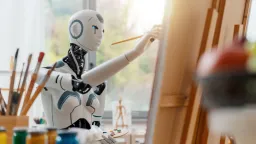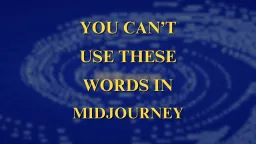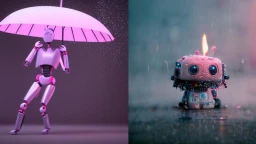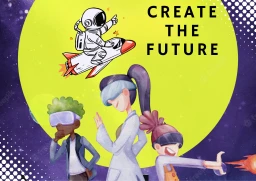How to write better Prompts for Midjourney?
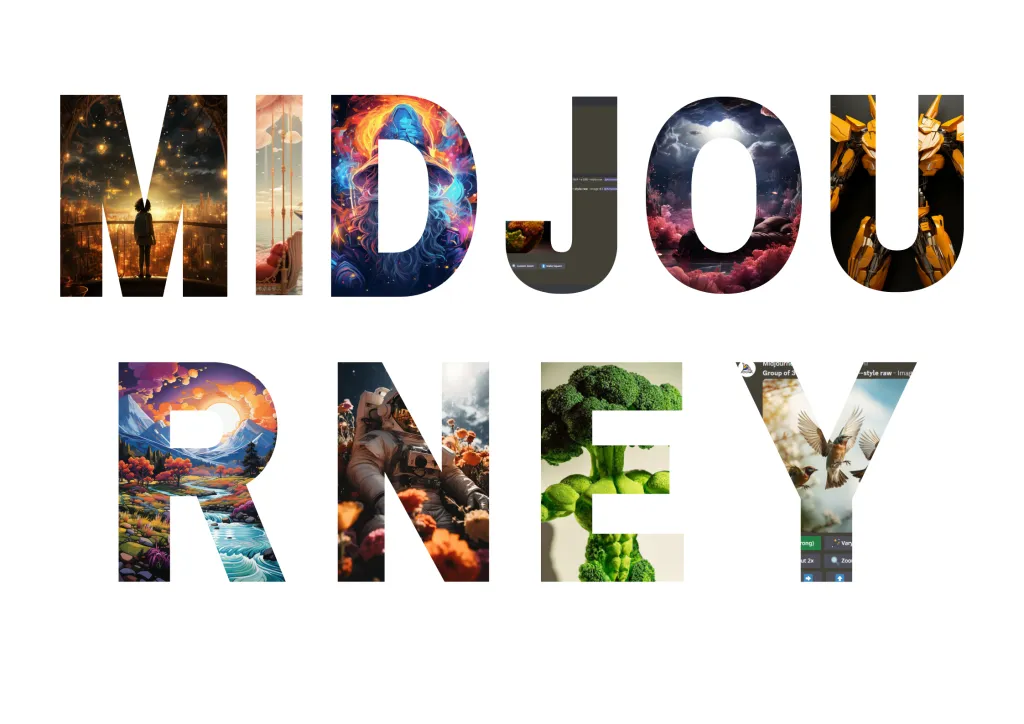
Whether you’re an artist, writer, or simply someone looking for inspiration, Midjourney can help you with everything. This platform offers a unique way to explore your creativity through prompts that ignite your imagination and push the boundaries of your artistic endeavors.
Let us enter the world of prompts and discover how they can elevate your creative process. We’ll explore different parameters to consider when formulating prompts, as well as techniques for incorporating descriptive language and enhancing creativity.
Understanding Midjourney and Its Prompts
Midjourney provides users with prompts that serve as starting points for their creative endeavors. These prompts can be in the form of words, images, or even specific artistic styles.
The beauty of Midjourney lies in its ability to challenge users to think outside the box. With each prompt comes an opportunity to explore new ideas and experiment with different techniques.
When creating your own prompts on Midjourney, there are several parameters you should consider. The following are few of the things to keep in mind:
- Clarity – make sure your prompt is easy to understand so that it can fully grasp the concept you’re trying to convey. Additionally, incorporating descriptive language can help set the scene.
- Finding a balance between realism and imagination – Grounding your prompts in reality can provide a relatable starting point to begin with. But please do let your imaginations run wild and create the impossible.
- Incorporating creativity into your prompt formulation – Think outside traditional art forms. By expanding the possibilities beyond realistic arts alone, you’ll attract a diverse range of creators eager to explore new avenues.
Understanding how Midjourney works means recognizing its unique approach towards prompting creativity through innovative ideas and challenging parameters.
Different Parameters to Consider while writing prompts
One way to make your Midjourney prompts more interesting, is by incorporating different parameters to work with. Here are the few things to keep in mind.
1. Art Style
It’s important to mention the keywords that are relevant to your artwork since it will make the result more authentic by implementing it. These keywords can be anything starting from a well-known artist’s name, style, themes, backgrounds to seasons, weather, etc.
Example Prompt: “Group of 3 birds flying, Vincent Van Gogh style painting”
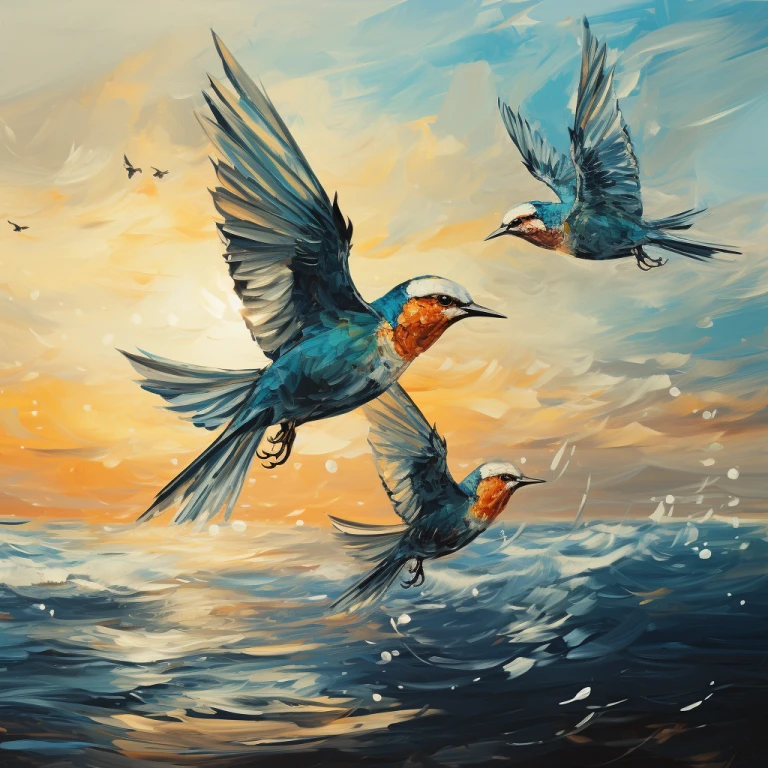
2. Subject
It’s totally fine to mention plural words while referring to a subject. For e.g., A group of birds, but it leads to a lot of possibilities in terms of number of birds, So If you want to showcase a birds group, instead of saying a group of birds, rephrase it to “group of 3 birds flying” or in plural words to get random numbers use “flock of birds flying”.
Example Prompt: “Group of 3 birds flying”

3. Heading
It’s important to set an environment for your subject. It will help frame the circumstances. With the use of right prompts, Midjourney will even help you in creating unrealistic imaginations to a real life setup.
Example Prompt: “Group of 3 birds flying above an erupting lava”
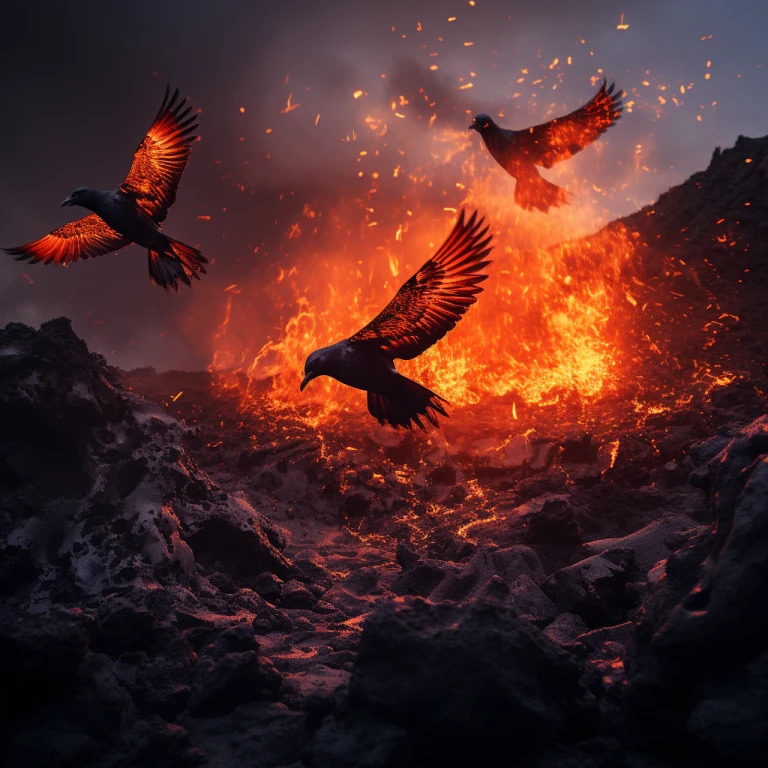
4. Adding Multiple Subjects
By making use of another Midjourney option called “Vary” you can modify your result by adding a new prompt to an already existing prompt.
E.G. Let us imagine both the artist “Van Gogh” and the “birds” in a single frame.
First create the birds by entering the prompt: “Group of 3 birds flying”

then click on “Vary (strong)” option and enter the prompt for the second subject. Prompt: “Van Gogh” and you will be surprised with the result you get.

5. Lighting
Lighting is a game changer keyword which alters the whole image outcome.
Depending on the time of day, the lighting varies. Thus the colors and contrasts differ. Here again, Midjourney is able to reproduce these contrasts.
E.G. Let us imagine those birds flying on a golden hour in the middle of the New York city. Here the time “golden hour” represents – the period of time the color of the sky goes from red and orange to yellow or, as its name suggests, golden tones, having a warm color temperature.
Prompt: “Group of 3 birds flying, golden hour, middle of New York city“
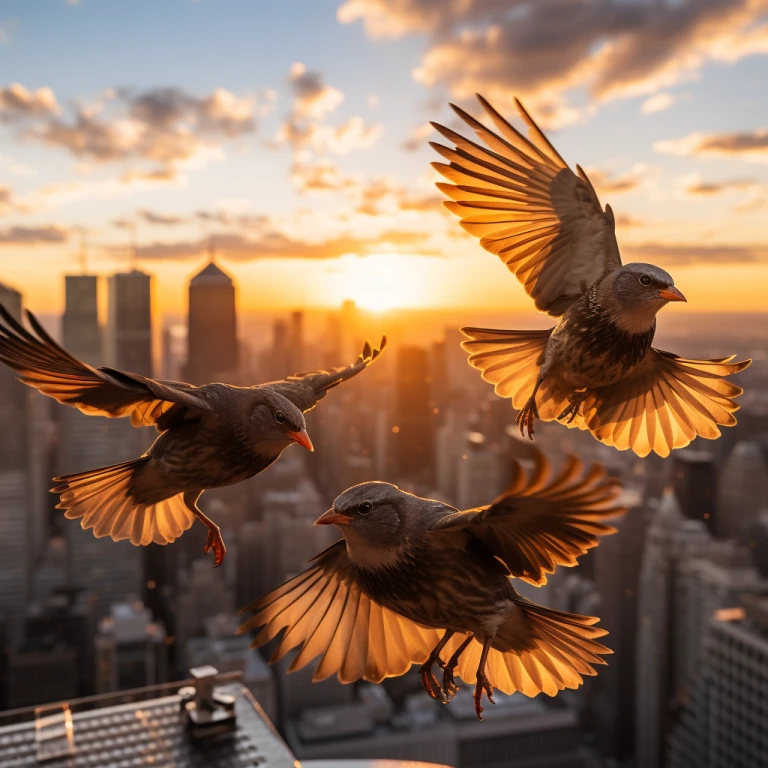
There are different types of lighting effects you can include in your prompt depending on the time and place you want for your image. There are multiple keywords such as Natural lighting, Ambient, Hard and Soft, Artificial, Directional and much more.
To know more about Lighting Effects
6. Angle
Angle determines the way your camera view has to look. The angle from where the image or photo is captured along with the distance it has to be captured. There are lot of shots for angle and distance from the subject, such as wide angle, ultra-wide angle, medium shot, drone view, aerial view, low-angle shot, ground view, Portrait, Macro shot and much more.
There are again lots of constraints to consider if we go in detailing, but this will suffice to get great outputs from your prompts.
You can also use the type of photography to determine the quality and angle of the shot. Try using prompts such as “Editorial Photography”, “Award winning shot” and “Cinematic, etc.
Prompt: “Flock of birds flying, ultra wide angle shot“
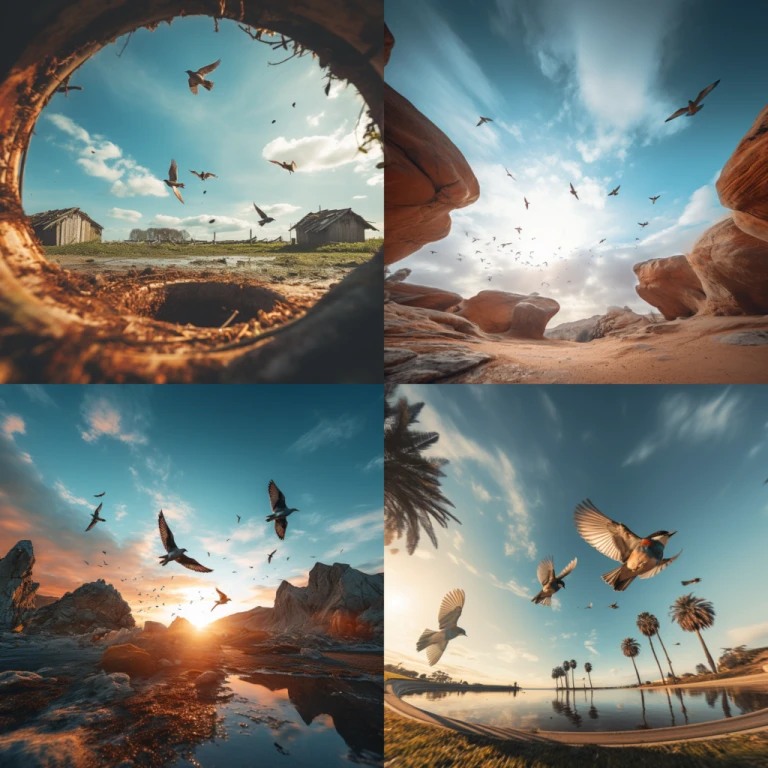
Prompt: Flock of birds flying, cinematic shot
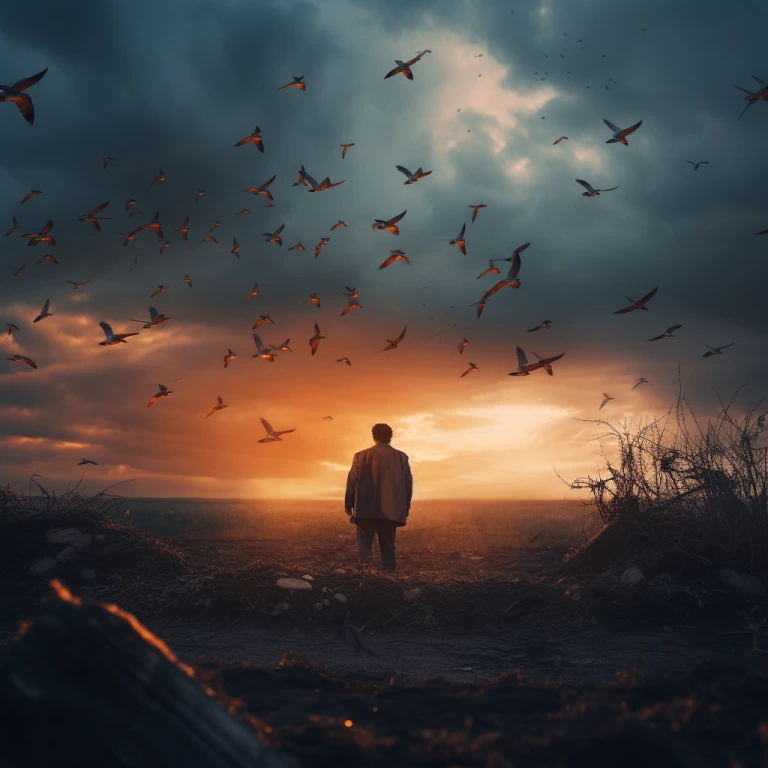
Also Read: How to generate image using Stable Doodle?
Enhancing Creativity and Originality
Try posing open-ended questions or scenarios that require creative thinking. For example, instead of asking for a realistic portrait of a character, write a prompt with something like “imagine a futuristic version of a specific character – what would it look like?”
Prompt: “a futuristic version of batman“
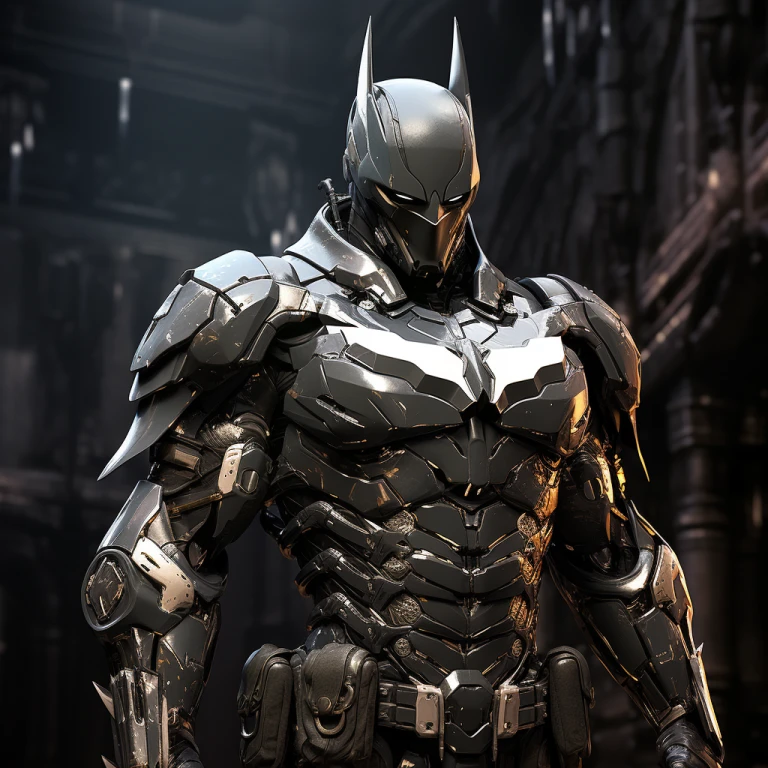
You will also need to choose the theme or topic of the prompt. Think about what kind of emotions or ideas you want to explore. Whether it’s love, nature, or social issues, choose a theme that has depth and resonance.
Example Prompt: “Creators explore, Beautiful new horizons, In art’s reflection“
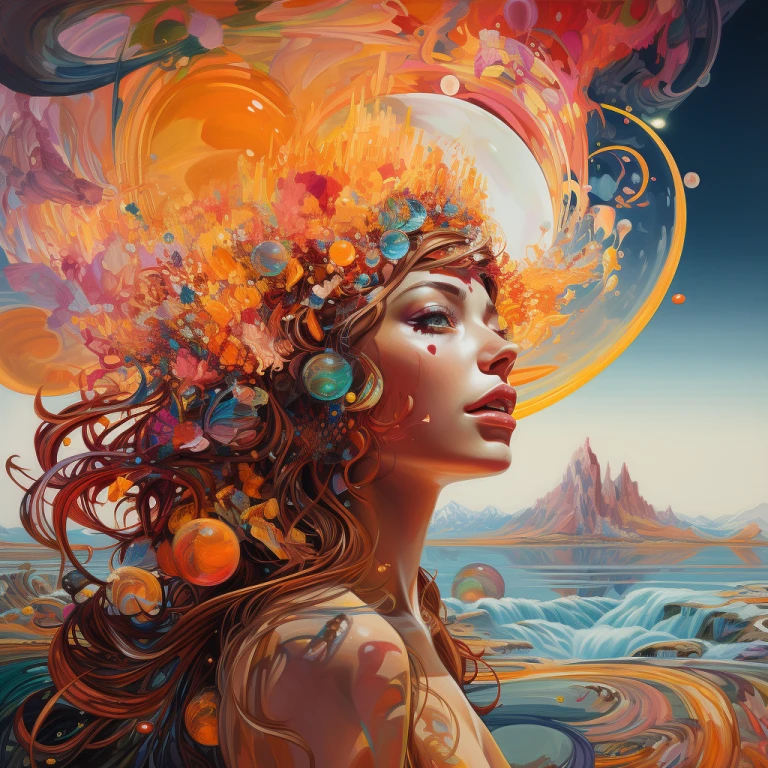
Although the latest version of Midjourney provides beautiful images on a shorter prompt, The length of the prompt is yet crucial. Too short and it may not provide enough context; too long and it might become cumbersome and confusing. Aim for concise yet descriptive prompts that capture attention without being overwhelming.
Incorporating Descriptive Language
When crafting a prompt, consider using sensory language that appeals to the five senses – sight, sound, smell, taste, and touch. For example, instead of simply asking Midjourney to draw a tree, write a descriptive prompts such as the one mentioned below. This level of description not only paints a clearer picture but also sets the mood and atmosphere.
Prompt: “create an image of a majestic oak tree with its sprawling branches reaching towards the sky“

Furthermore, utilizing figurative language such as smiles or metaphors can add depth and complexity to your prompts. Comparing objects or concepts with something unexpected might work wonders.
Prompt: “visualize a city skyline as if it were made out of ribbons dancing in the wind“

Also Read: How the fusion of AI and NFT is going to change the future?
Effective Midjourney Prompt Examples
Prompts for Generating Images:
1. “Create an image capturing the beauty of nature at its rawest.”
2. “Illustrate a comic scene using vibrant colors.”
3. “Design a futuristic cityscape with flying cars and holographic billboards.”
Prompts for Specific Artistic Styles:
1. “Produce a portrait in the style of Impressionism, focusing on capturing light and movement.”
2. “Create a cover image for a piece of music album inspired by traditional African style mixed with modern electronic elements.”
3. “Create a visual in the style of magical realism, blending everyday events with fantastical elements.”
Prompts for Different Art Forms:
1. “A team of 3 people on their dance routine exploring themes of love and loss.”
2. “An abstract sculpture representing human emotions.”
Start experimenting with these prompt examples and try to add your own modifications to begin with.
Resources and Links to learn Midjourney Prompt Generation
Here are few of the places you can visit to learn more about prompting and get ideas to upskill your prompt writing ability.
1. PromptMANIA
3. Midjourney Prompt Generator
4. Phraser
5. PromptHero
Few of the accounts you need to checkout for getting better ideas and to learn prompting in details are:
Try to explore new opportunities in the field of AI art generation by learning new skills everyday. It’s important to learn to create good prompts and to understand the value of such prompts. We hope these article helps you in getting the details required for you to pursue further. Learn everyday and enjoy this new world invention to it’s full potential.
Follow us on Instagram, Facebook, and Twitter!
Read on AI tools for Social Media
